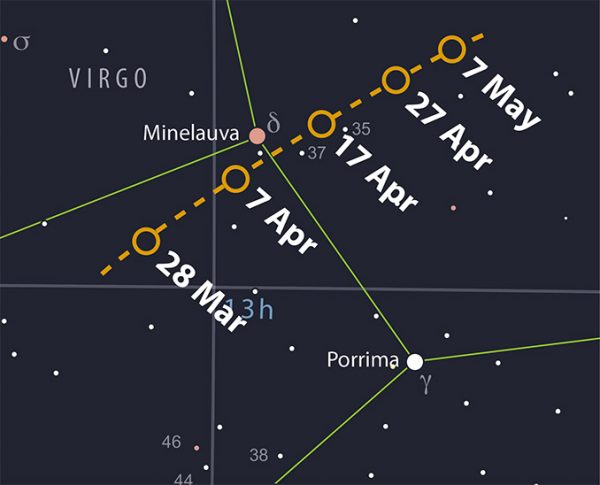Look out for asteroid Juno at opposition – Astronomy Now Online
One of the largest objects in the Asteroid Belt, (3) Juno, comes to opposition on 2 April, when it lies directly opposite the Sun as seen from Earth, and is at its brightest – albeit still only visible through telescopes.

Tracking down asteroids is a fun thing to do in and of itself, but it can also be a stepping stone to ‘doing science’ in one valuable way by entering the fascinating world of astrometry. This is the measurement of the motions and positions of celestial bodies in the sky, allowing, for example, the determination of orbits of newly-discovered asteroids, including those that are potentially hazardous to Earth
Since Juno is located in the Asteroid Belt between Mars and Jupiter, just over two-and-a-half times further from the Sun than Earth, it keeps itself well away from Earth and poses no danger at all, but that doesn’t mean it’s not interesting. Measuring 320 kilometres across at its widest point, this lumpy, potato-shaped object is a stony S-type asteroid, which means that it is made of silicate rock, rather than the carbonaceous rock that makes up three-quarters of all asteroids.
Shining at magnitude +9.2 at opposition, Juno will be just out of range of 10 × 50 binoculars, but it can easily be located in the constellation Virgo through a small telescope, and followed over time as it gradually traverses the sky.
On 2 April, it will lie 2.2 degrees south-east of magnitude +3.4 star Minelauva (delta [δ] Virginis), which is one of the stars on the eastern side of the Bowl-shaped main body of Virgo. Its precise position is RA 13h 01m 30.0s, Dec +01° 48’ 59”.
Throughout April, Juno will continue to move north-westwards, passing south of Minelauva to lie nearly four degrees north-west of it by the end of the month. It travels at about an arcminute per hour during early April, which is a rate that shouldn’t be too difficult to track against the stationary field stars over the course of a few hours if you are using a driven telescope operating at high magnification.
To assist you in your search, you can find nightly ephemerides (i.e. Juno’s position in RA and Dec) generated for your observing site, via the Minor Planet Center’s website.
Sequential images centred on Juno’s position, taken a couple of hours part, should also betray Juno’s presence by revealing its movement against the background stars. Using a long-focus telescope is a distinct advantage.
Happy asteroid hunting!





